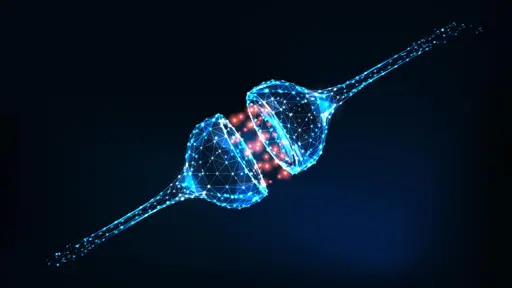UMass Amherst engineers have built an artificial neuron powered by bacterial protein nanowires that functions like a real one, but at extremely low voltage. This allows for seamless communication with biological cells and drastically improved energy efficiency. The discovery could lead to bio-inspired computers and wearable electronics that no longer need power-hungry amplifiers.
Is it naive to assume that this could potentially simplify building brain-computer interfaces? Or at least make them safer?
This allows for seamless communication with biological cells
Smartphones in 2040:

Whatever. As long as I can run LineageOS or Debian on it.
noooo deeebiiiian, juuusst caaaandy cruuuush
SWEET!
That’s a huge step. We can do full neuron level scan of human brain and now we can make artificial neurons. All we need now is to combine that with some cloning and we have effectively invented immortality.
Not sure if its good enough for that yet. But huge step in that direction. Also the digitisation process does destroy you existing brain so might still be dieing depending on ur interpretation of star trek teleporters.
Credentials: I published in this field, but I don’t have time to read the entire paper right now.
This is exciting work. Based on the key highlights, it sounds like their work focuses on how plausible it is to construct the bio-artificial neuron, and they have done so with great success.
What I would like to learn about is what advantages this technology has compared to just cultivating neurons on a microelectrode array. Are the artificial cells easier to maintain? Do they interface with electrodes without developing glial scarring like our brains do? Can they bio-engineer special proteins (e.g. optogenetic channels) easier in these cells than in mouse lines?
The discussion section is fairly anemic. The authors say this will “spearhead” additional development but I was disappointed the authors didn’t clarify what will be additionally developed.
Until these advantages are spelled out, it feels like we’re re-invented the biological wheel. We already have cells that can integrate and fire at low voltages. They’re called neurons. Why did we need artificial ones?
Thanks for the insight. Lemmy starts to feel like reddit in the past were some specialist or the author of the paper chimed in on the discussion.
By the time I finished graduate school, reddit was dead so I never bothered getting verified on the Science subreddits. It was a bummer!
sounds like saying “we already have a lung in our body why make an iron lung.”
Like I know obviously it’s not like plug this into your spine and cure paralysis but I could definitely be very useful.
Not quite, an iron lung replaces a dysfunctional organ. I’m saying we can already grow neurons onto circuits, and it’s difficult (not impossible) to implant neurons into a body. I don’t easily see how these bio-engineered neurons make those processes easier.
Fair, I suppose I understand the idea but like… idk I can think of MANY reasons (patent bullshit, could be useful, or prove to be cheaper, or developed further into something better) why having something similar to an already existing process is still good. Look at Sodium batteries potentially now being 10% of the cost of lithium ones, even if they’re a similar but generally worse storage technology. I don’t think it should be a requirement that a new process or discovery have an inherent reason/advantage. Shit like that is how we end up with leaded gasoline.
It’s more like saying, “we can already grow new lungs, why make an iron lung?”
Hah, how cool is this?! I just started reading Dan Brown’s new book that is largely about this same thing.
What’s the book called, and is it a Langdon book?
Yes, Langdon. The Secret of Secrets.
I just finished it. Very interesting topic
So…bio-neural gel packs?
I’ve seen this movie. Run, Tuvix! Run for your life!
Janeway called and wants more coffee
Good. There are certain people that need an injection of more neurones, perhaps there is hope for humanity yet.
Detail, that the author doesn’tt seem to know; neurons don’t work with a electrical charge, but with a cascade-reaction of ion pumps and -potentials. That’s why they’re sensitive to mechanic stimulus btw.
I’ll be the pedant no one asked for - the sodium and potassium channels in the neuron respond to voltage changes in the membrane, so the author isn’t wrong.
Action potentials are generated when dendritic (input) channels bind with neurotransmitters like glutamate and GABA released by the axon terminal (output) of the pre-synapse cell. When these channels open, the let in ions like Calcium, Sodium, and Chloride.
These ions change the electric potential across the cell membrane, once this passes a key threshold, the sodium channels in the rest of the cell open up and generate an action potential. It’s driven by ions with electric charge (electrochemical).








